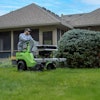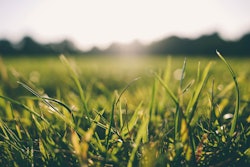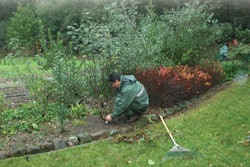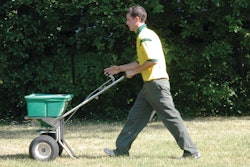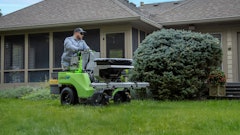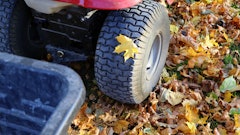
It can seem impossible to obtain the lush green lawn that your customer desires. No matter what, it ends up looking patchy and unkempt. Here are seven common lawn care mistakes that may be causing these lawn woes.
1. Watering Issues
In order to maintain a healthy lawn, the right amount of water must be applied at the right time. Typically, a green lawn requires an inch of water per week. This amount can vary depending on the climate you are working in. A common mistake is watering the lawn on a daily basis. This small amount of water is insufficient to reach the roots of the grass. The grass can dry up and become brown. On the opposite side of the spectrum, giving the lawn an inch of water all at once over-saturates the area. This means the majority of the water is running off and away from the roots of the grass. This also results in a brown and crispy lawn. The ideal method for watering the grass is giving it a third of an inch three times a week, early in the morning. This allows the roots to fully hydrate and retain water.
2. Incorrect Use of Fertilizer
Applying too much fertilizer can damage the lawn. Depending on the type of fertilizer, it can burn the grass. This will injure or destroy it. The burning is due to high levels of nitrogen typically found in lawn fertilizers, which makes the lawn brown and patchy. This can lead to other types of disease or problems. Be careful when putting fertilizer down. The best time to put down fertilizer is when the lawn is having a growth spurt. This generally occurs during the start of spring or the beginning of fall, depending on your climate. It's best to use a slow release fertilizer, so the lawn doesn't burn. Make sure to test the soil, so you can purchase the correct fertilizer to replace minerals that are lacking.
3. Using One Type of Grass Seed
It's unlikely that all areas of the lawn get exactly the same amount of light and shade during the day. By using only one type of grass seed, you're setting yourself up for failure. Purchase grass seed that contains a variety of types. This will impart the different types of qualities and resilience needed for a healthy lawn, which can also help with disease and insect infestations. Some grasses are more resistant to disease and insects than others. This will allow for the best possible outcome for the lawn.
4. An Overabundance of Shade
Some areas of the lawn can be ill suited for grass. Areas that rarely see daylight won't do well with any grass seed. Even shade grass seed varieties require some light to stay green and healthy. Shaded areas generally stay too moist and are more prone to moss growth than sunnier locations. Consider turning this segment of the lawn into a shade planting bed. This will save time and grief trying to maintain the perfect lawn.
5. Poor Soil Conditions
Grass does better when it has a good base. This can mean that the soil is too rocky or lacks essential minerals needed to thrive. Aerating and thatching the lawn can help to alleviate this. After completion, you can amend the soil to make it more conducive for the lawn. Completely starting over and adding proper soil before reseeding or sodding the lawn can be beneficial.
6. Cutting it Too Close
Cutting the grass too close to the roots is another frequently made mistake. This can cause the grass to look unhealthy. Never cut more than one third off of the blades of the grass at any one time. This will allow the grass to regenerate properly. Remember not to cut the grass too short at the end of the growing season. This can encourage weed growth that could out-compete the grass. Always mow the lawn with a sharpened blade to avoid damaging and bruising the grass blades.
7. Bagging Those Clippings
By removing the clippings, you could be taking away essential nutrients and nitrogen from the lawn. Use a mulching lawn mower to provide the grass with free fertilizer. This can save some time caring for the lawn.


